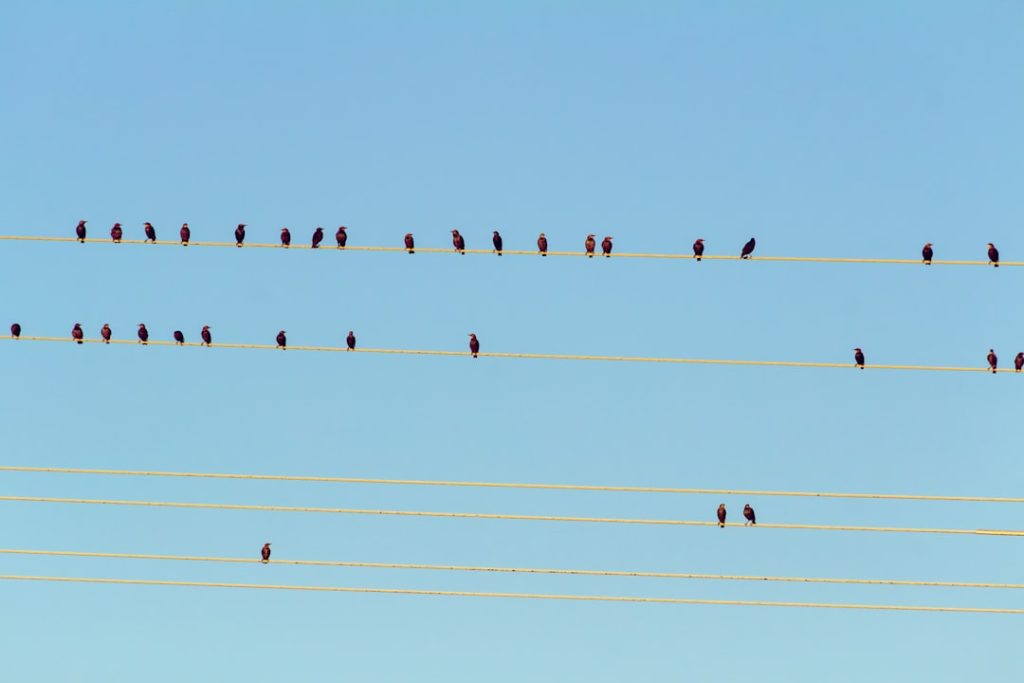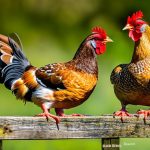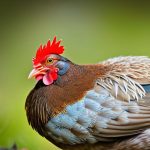Keeping quails with chickens can be a successful practice for poultry keepers. While quails and chickens have distinct needs and behaviors, they can coexist effectively when proper management techniques are employed. Quails are characterized by their small size, docile nature, and egg-laying capabilities, whereas chickens are larger, more social, and also produce eggs.
Understanding these differences is crucial for creating an environment that supports both species. The integration of quails and chickens can offer mutual benefits, including companionship and environmental enrichment. This combination can also be an efficient use of space for poultry keepers with limited area.
However, it is essential to address the specific requirements of each species when housing them together. This includes providing appropriate shelter, nutrition, and health care to ensure the well-being of both quails and chickens. Successful cohabitation of quails and chickens requires careful planning and ongoing management.
Factors such as proper housing design, feeding strategies, and health monitoring must be considered. When these aspects are adequately addressed, keeping quails with chickens can be a rewarding and productive experience for poultry enthusiasts.
Table of Contents
- 1 Choosing the Right Housing for Quails and Chickens
- 2 Feeding and Nutrition for Quails and Chickens
- 3 Managing the Health and Well-being of Quails and Chickens
- 4 Integrating Quails with Chickens in the Flock
- 5 Understanding the Social Dynamics between Quails and Chickens
- 6 Conclusion and Tips for Successfully Keeping Quails with Chickens
- 7 FAQs
- 7.1 What are the benefits of keeping quails with chickens?
- 7.2 What should be considered before keeping quails with chickens?
- 7.3 How can quails and chickens be housed together?
- 7.4 What should be fed to quails and chickens when kept together?
- 7.5 What are some potential challenges of keeping quails with chickens?
- 7.6 Are there any special considerations for keeping quail and chickens together in cold or hot climates?
Key Takeaways
- Keeping quails with chickens can be a beneficial and harmonious arrangement for both species.
- Choosing the right housing is crucial for ensuring the safety and comfort of both quails and chickens.
- Providing a balanced diet and proper nutrition is essential for the health and productivity of quails and chickens.
- Regular health checks and proper management practices are necessary to ensure the well-being of quails and chickens.
- Careful integration and understanding of social dynamics are key to successfully keeping quails with chickens in the same flock.
Choosing the Right Housing for Quails and Chickens
Accommodating Different Roosting Preferences
Quails are ground-dwelling birds that prefer low roosting areas, whereas chickens are more comfortable with elevated roosts. Therefore, the housing should accommodate both preferences to ensure the comfort and safety of all birds.
Protecting Quails from Predators
Quails require protection from predators, as they are smaller and more vulnerable than chickens. This can be achieved by using wire mesh or other secure materials to enclose the quail area within the larger chicken coop or run.
Providing Separate Nesting Areas
Providing separate nesting areas for quails and chickens is crucial to prevent competition and potential aggression over nesting sites. Quails prefer secluded nesting spots with soft bedding material, while chickens typically use elevated nesting boxes. By creating distinct nesting areas for each species, poultry keepers can minimize stress and ensure that both quails and chickens have access to suitable nesting spaces.
Feeding and Nutrition for Quails and Chickens

Feeding and nutrition are essential aspects of keeping quails with chickens, as both species have distinct dietary requirements. Quails are omnivorous birds that consume a diet consisting of seeds, insects, greens, and commercial game bird feed. On the other hand, chickens are also omnivores but have different nutritional needs compared to quails.
They require a balanced diet of grains, seeds, insects, greens, and commercial poultry feed to support their growth, egg production, and overall health. When feeding quails and chickens together, it’s important to provide separate feeding stations to prevent competition and ensure that all birds have access to adequate food. Additionally, offering grit and oyster shell separately for quails and chickens is essential to meet their specific digestive needs.
Grit aids in the digestion of food for both species, while oyster shell provides calcium for eggshell formation in chickens. By understanding the dietary requirements of quails and chickens, poultry keepers can provide appropriate nutrition to support the health and well-being of both species. In addition to commercial feeds, providing fresh water is crucial for quails and chickens.
Water should be easily accessible and kept clean to prevent dehydration and promote proper hydration for all birds. Overall, maintaining a balanced diet and ensuring access to fresh water are essential components of feeding and nutrition for quails and chickens living together.
Managing the Health and Well-being of Quails and Chickens
Managing the health and well-being of quails and chickens requires regular observation, preventive care, and prompt intervention when necessary. Both species are susceptible to various health issues, including parasites, respiratory infections, and injuries. Therefore, implementing a proactive healthcare routine is essential to prevent and address potential health concerns.
Regular health checks should be conducted to monitor the condition of quails and chickens, including their overall appearance, behavior, and egg production. Any signs of illness or injury should be promptly addressed by isolating affected birds and seeking veterinary care if needed. Additionally, implementing biosecurity measures can help prevent the spread of diseases between quails and chickens.
This includes practicing good hygiene, quarantining new birds before introducing them to the existing flock, and keeping the living area clean and free from potential sources of contamination. Furthermore, providing appropriate shelter, ventilation, and protection from extreme weather conditions is crucial for maintaining the well-being of quails and chickens. This includes ensuring that the housing is secure from predators, well-ventilated to prevent respiratory issues, and equipped with adequate bedding material for comfort.
Overall, managing the health and well-being of quails and chickens involves proactive healthcare practices, preventive measures, and attentive observation to promote the overall welfare of both species.
Integrating Quails with Chickens in the Flock
Integrating quails with chickens in the flock requires careful planning and gradual introduction to minimize stress and potential conflicts between the two species. When introducing new quails or chickens to an existing flock, it’s important to provide a separate but adjacent living space initially to allow them to become familiar with each other’s presence without direct contact. Gradually introducing quails to the chicken flock or vice versa can help reduce territorial behavior and aggression among birds.
This can be achieved by allowing supervised interactions between quails and chickens in a neutral area outside of their living spaces. Observing their behavior during these interactions can help poultry keepers assess their compatibility and make adjustments as needed. Additionally, providing multiple feeding stations and hiding spots within the shared living space can help minimize competition and provide a sense of security for both quails and chickens.
This allows each bird to access food, water, and shelter without feeling threatened by others in the flock. Overall, integrating quails with chickens in the flock requires patience, observation, and gradual introduction to promote a harmonious coexistence between the two species.

Quails are generally more independent and less social than chickens, preferring to live in small groups or pairs rather than large flocks. In contrast, chickens are highly social animals that thrive in larger groups with established pecking orders.
Creating a Suitable Environment
When keeping quails with chickens, it’s essential to consider these social differences and provide suitable living conditions that accommodate the natural behaviors of both species. This includes offering hiding spots for quails to seek refuge when needed and providing enough space for chickens to establish their social hierarchy without causing stress to quails.
Managing Conflicts and Stressors
Observing the interactions between quails and chickens can help poultry keepers identify any potential conflicts or stressors within the flock. Signs of aggression or bullying should be addressed by providing additional resources such as feeding stations or hiding spots to reduce competition among birds. By understanding the social dynamics between quails and chickens, poultry keepers can create an environment that supports their natural tendencies while minimizing potential conflicts within the flock.
Conclusion and Tips for Successfully Keeping Quails with Chickens
Keeping quails with chickens can be a rewarding experience when approached with careful planning, consideration of their specific needs, and attentive management. To successfully keep quails with chickens, poultry enthusiasts should consider the following tips: 1. Provide suitable housing that accommodates the preferences of both quails and chickens.
2.
Offer a balanced diet that meets the nutritional requirements of each species while providing separate feeding stations.
3. Implement proactive healthcare practices to prevent potential health issues and address any concerns promptly.
4. Gradually introduce new birds to the existing flock to minimize stress and potential conflicts.
5.
Understand the social dynamics between quails and chickens to create a cohesive living environment that supports their natural behaviors. By following these tips and considering the unique characteristics of both quails and chickens, poultry keepers can create a thriving environment where both species can coexist harmoniously while enjoying the benefits of companionship and mutual stimulation. In conclusion, keeping quails with chickens requires thoughtful planning, attentive management, and an understanding of their specific needs.
With proper care and consideration, poultry enthusiasts can create a successful living environment where both quails and chickens can thrive together in harmony.
If you’re interested in learning more about keeping quails with chickens, you should check out the article on Poultry Wizard. They have a wealth of information on raising poultry, including tips on how to successfully integrate quails into a chicken coop. Additionally, they also have articles on topics such as building a chicken coop in Grand Island, NE (source) and the benefits of renting a chicken coop (source).
FAQs
What are the benefits of keeping quails with chickens?
Keeping quails with chickens can provide several benefits, including pest control, increased egg production, and a more diverse and interesting flock.
What should be considered before keeping quails with chickens?
Before keeping quails with chickens, it’s important to consider the space requirements, potential for aggression between the two species, and the specific needs of each type of bird.
How can quails and chickens be housed together?
Quails and chickens can be housed together in a coop and run that provides enough space for both species, separate nesting areas, and access to appropriate food and water.
What should be fed to quails and chickens when kept together?
When kept together, quails and chickens can be fed a balanced diet of commercial poultry feed, supplemented with appropriate treats and occasional access to foraging opportunities.
What are some potential challenges of keeping quails with chickens?
Potential challenges of keeping quails with chickens include the risk of disease transmission, differences in dietary needs, and the potential for aggression or bullying between the two species.
Are there any special considerations for keeping quail and chickens together in cold or hot climates?
In cold climates, providing adequate shelter and protection from the elements is important for both quails and chickens. In hot climates, ensuring access to shade, ventilation, and plenty of water is crucial for both species.
Meet Walter, the feathered-friend fanatic of Florida! Nestled in the sunshine state, Walter struts through life with his feathered companions, clucking his way to happiness. With a coop that’s fancier than a five-star hotel, he’s the Don Juan of the chicken world. When he’s not teaching his hens to do the cha-cha, you’ll find him in a heated debate with his prized rooster, Sir Clucks-a-Lot. Walter’s poultry passion is no yolk; he’s the sunny-side-up guy you never knew you needed in your flock of friends!







